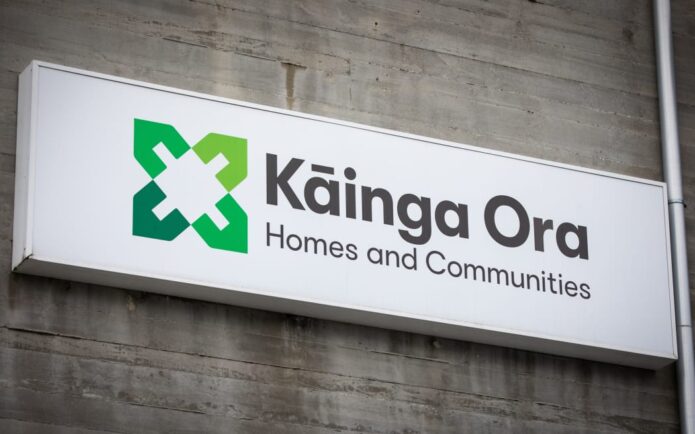PHOTO: Matawhero Lloyd. 1NEWS
This is where all my ancestors used to live.
It’s called Pakake o Whirikoka, an ancient pā on Matawhero Lloyd’s ancestral land that for decades was just a paddock.
“It used to be a holding pen for the cows,” said Lloyd.
Now, it’s a piece of living history embedded in the hills of Whatatutu, a tiny settlement behind Gisborne.
An air of tranquility washes over you as you enter through the flax and mānuka-post fences. The site is dotted with traditional whare and native trees overlooking the Waipaoa River.
Smoke spirals across the valley from the cooking fires, and you can see and feel it—this is the life Ngāi Tamatea once had here.
“It’s a labor of love for us as a family and for our iwi to restore a historical place of significance,” said Lloyd.
And although its story is hundreds of years old, its modern recreation started around seven years ago.There were no blueprints of what was once on the site. Instead, Lloyd looked to the earth to guide him.
“Once we’d cleared out all of the weeds … you get back to the dimensions that are existing in the ground.”
The huts, cooking pits, and their history still lived in the soil. It was as though the land spoke to Lloyd.
But to rebuild the past, he needed modern technology.

“With my extensive background in IT, I had to Google how to do everything. I experimented and gave it a shot.”
Lloyd used the odd chainsaw and cable tie during construction, but most of the work used people-power over power tools.
“Manpower and daughter power and son power and friend power, and anyone who comes and visits,” explained Lloyd.
He laughed when describing his children’s attitude towards getting involved in the first stages. Eventually, they came around, and the slow build brought them together.
“When you’re doing things slowly, taking your time and being patient, you’re a little bit more in tune and, I think, in harmony with the natural rhythms.”
His greatest tool was the stories of older community members, who remembered how things were once done.
“We try to do it as much as we can the way they used to, but we don’t live in those days. Some of the resources and some of the materials and tools they had, we don’t have.”It’s easy to feel encompassed in the past, but glancing across the valley will remind you how much has changed.

The banks above the Waipaoa River were once covered in native giants, which gave Lloyd’s ancestors all the resources they would ever need.
Now, the area has been cleared for farmland and pine forests.
As bunches of tī kōuka (cabbage tree) leaves are placed across the roof of his latest hut, Lloyd acknowledges how different things once were.
“Traditionally, they used raupō (swamp grasses). Unfortunately, all the swamps have been drained for agricultural and farming purposes, so we don’t have any raupō that we can use.
“We’d have to create a whole new series of swamps to do that.”
SOURCE: 1NEWS













